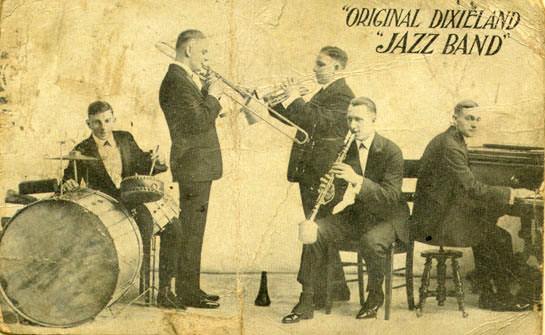And All That Jazz
- Meg Dunham
- Aug 26
- 3 min read
There is no way to truly define when and where jazz first sprung to life. The name jazz was originally given to the music that was coming out of New Orleans during the early twentieth century but many of the components that make jazz so interesting can be linked to other cultures and traced back generations. Early jazz music would be passed between musicians in New Orleans orally, and the vibrancy of the music can be linked to musical exchange between people of different cultures. Since New Orleans was known for being a mixing pot of cultures thanks to the seaport, and the neighborhoods where unlike in other cities, families from different backgrounds lived right next to each other. This cultural exchange is reflected in the diversity of who would play key roles in jazz's development, such as Buddy Bolden, Nick LaRocca, and Jelly Roll Morton.

Jazz first began to spread out of New Orleans as many of the musicians joined vaudeville acts, riverboat bands, and other tours, and it only continued to spread as the success of the musicians who had left New Orleans for other cities like New York and Chicago created great demand for jazz, and thus great employment opportunities for the jazz musicians of New Orleans. It was in New York in 1917 that Nick LaRocca's Original Dixieland Band would record and release Livery Stable Blues which is considered the first commercial jazz recording. The record's release was a great hit and launched jazz into the national and international spotlight. By 1919 jazz was such a major craze that the Original Dixieland Band was playing in England, and Sidney Bechet another jazz musician was playing in France.

During the 1920s there were two prominent styles of jazz. The first was the traditional style which came from New Orleans of ensemble bands formed by groups of musicians. The great successes' of this style are the Original Dixieland Band and the Original Creole Orchestra. The second was a style which had developed in Chicago after New Orleans acts had emigrated there which was a more spontaneous, and organic style of jazz with a focus on solo acts. A good example of this style would be Louis Armstrong who left New Orleans for Chicago in 1922.

The 1920s and the imposition of prohibition were when jazz was formed into the cultural phenomenon we know it to be. Prohibition brought about a complex network of underground mob run speakeasies which were all vying to acquire the best entertainment for their clients. Jazz just so happened to fit right into the era's party mood. It was the mix of alcohol-steeped partying and jazz music which brought about many dance crazes like the Charleston, and Lindy Hop. These were the characteristics that earned the 20s both the names The Roaring 20s and The Jazz Age. Some of the Jazz records from the likes of Louis Armstrong and King Oliver during the era of prohibition have lyrics which openly talk of alcohol. Armstrong had a record titled Knockin' a Jug, and Oliver's song Me and My Gin included the lyric "Any bootlegger is certainly a friend of mine".

Prohibition is also what allowed for Montreal to cultivate a large jazz community. This was because the province of Quebec never instated any kind of complete ban on alcohol, meaning that it was one of the only places in North America where the consumption of alcohol was completely legal. This lack of outright ban made the province of Quebec but especially Montreal a big attracter of American tourists who just wanted to party without having to hide, this earned the city the moniker of Sin City from the visiting americans. This reputation also meant that many American Jazz musicians were flocking to Montreal to perform. This flock to Montreal even inspired some songs such as Irving Berlin's Hello Montreal!. There were two main clubs that visiting Americans would frequent for good partying and Jazz, Café St-Michel, and Rockhead's Paradise. These are the clubs where Oliver Jones, and Oscar Peterson two Montreal Jazz Legends began their careers. These clubs however were not just where locals played there were many acclaimed jazz performers who played these clubs like Louis Armstrong.




Comments